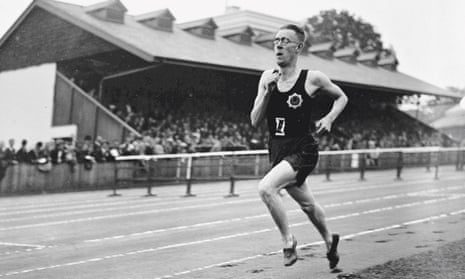In the minds of most runners, the marathon looms large as the ultimate distance. It is both a supreme test of endurance and an achievement that even non-runners can appreciate and admire. There’s no doubt that the marathon is captivating for participants and spectators alike, and its position as endurance running’s blue-riband event is justified. But for me, and many others, it has a rival. A distance with just as much heritage and appeal; a distance that involves speed, tactics and excitement: the mile.
At 1,609 metres, or just over four laps of a track, it is in many respects the perfect distance: short enough to be fast and furious, but long enough to incorporate the surges and jostlings of a proper distance event. Great to watch and even better to race, the mile used to be running’s most talked about event. For years athletes tried and failed to break the seemingly impenetrable four-minute barrier, in much the same way that two hours now stands as the ultimate challenge for marathoners. When Roger Bannister finally broke four minutes in 1954, the floodgates opened, and emboldened with the knowledge that it really could be done, many others soon broke it too. British athletes would go on to dominate the event in the 1980s, with Coe, Ovett and Cram all breaking world records. The current record is held by Hicham El Guerrouj, who ran 3:43.13 in 1999.
But it isn’t only competitive athletes who can benefit from racing a mile. It is the ultimate sharpener, perfect for testing your fitness levels: short enough that you can really push yourself, even at the first attempt, but long enough to mean that you’re still running, rather than sprinting. Those of us who lack the technique and body shape of sprinters can still compete.
Pushing yourself to run faster than is comfortable helps develop muscles and hone your ability to endure running longer distances. Running, and indeed racing, shorter distances like the mile, is also great way of breaking out of the long-run-same-pace rut that it’s so easy to fall into. Blast a mile, and you’ll soon know exactly how fit you are. Keep doing it, and there’s every chance you’ll start to see your times coming down for the longer distances.
In recent years, thanks largely its proximity to the 1500m, the mile has often been overlooked. In the US, there is a Bring Back the Mile campaign, which argues that the mile has greater cultural and historical significance than the 1500m, and is an event which people can ‘get behind’ more easily. It’s no coincidence that John L Parker Jr made Quenton Cassidy, the protagonist of his novel Once a Runner (for many the best fictional account of running), a miler. The distance shapes the character - hard to deal with, unpredictable, and always worth watching. In Parker Jr’s narrative, the miler becomes the mile.
The mile is seeing something of a resurgence in the UK too. I’m looking forward to taking part in two very different mile races in the coming months. Sunday 19th June will see thousands of us gather in the shadow of St Paul’s Cathedral at the start of the City of London Mile. It promises to be a great experience; a fun, frantic, family-friendly dash around the financial heart of the capital.
But the real deal for me is the mile I will race on the track, as part of the Golden Stag Mile event, which is being held at Allianz Stadium in London on 20th July - a night of graded mile races, open to all club runners. To race a mile on the track is an all too rare opportunity to follow in the footsteps of Bannister, Landy and El Guerrouj - and even the fictitious Quenton Cassidy.
Every race has its own distinct stages, and in a mile on the track these stages are delineated neatly by the four laps, each the same distance, of course, but utterly different in character. Lap one is a blur. The gun fires and adrenaline powers you round. You hardly feel a thing, and the lap is over before you know it.
Lap two is when things get more serious. You can feel the effort, but there’s still a long way to go. It’s also the stage when you need to make sure you are where you need to be in the pack. An old cliché applies here: you can’t win the race at this point, but you can certainly lose it.
Lap three is the tough one. The physical strain is taking its toll, but the mental effort is harder to bear. You’re feeling at your absolute limit, but you’re still only halfway round. But if you can get your head down and dig in, you will soon be rewarded with the beautiful sound of the bell.
That ringing in your ear means that it’s the start of the final lap. Dilly-ding time, as a certain football manager would have it. Knowing that you only have one more lap to go is a huge psychological boost, but it doesn’t get any easier. In fact, if you’ve been running hard enough, you’ll likely start to feel lactic acid working its poison on your limbs, compromising your ability to run. Parker Jr describes it as “the locked-up zombie gait of total oxygen debt”, and it is not nice. But it’s almost at an end; you’re nearly there.
Quenton Cassidy moved out to the second lane, the Lane of High Hopes, and ran out the rest of the life in him.
And then it’s over, and you’ve just finished one of the toughest races you’ll ever take on. And what’s more, you can now call yourself a miler.
Edward blogs at medium.com/@edprice and tweets at @edprice7
For information on the Golden Stag Mile, see the Barnet & District AC website: www.barnetadac.com/mile

Comments (…)
Sign in or create your Guardian account to join the discussion